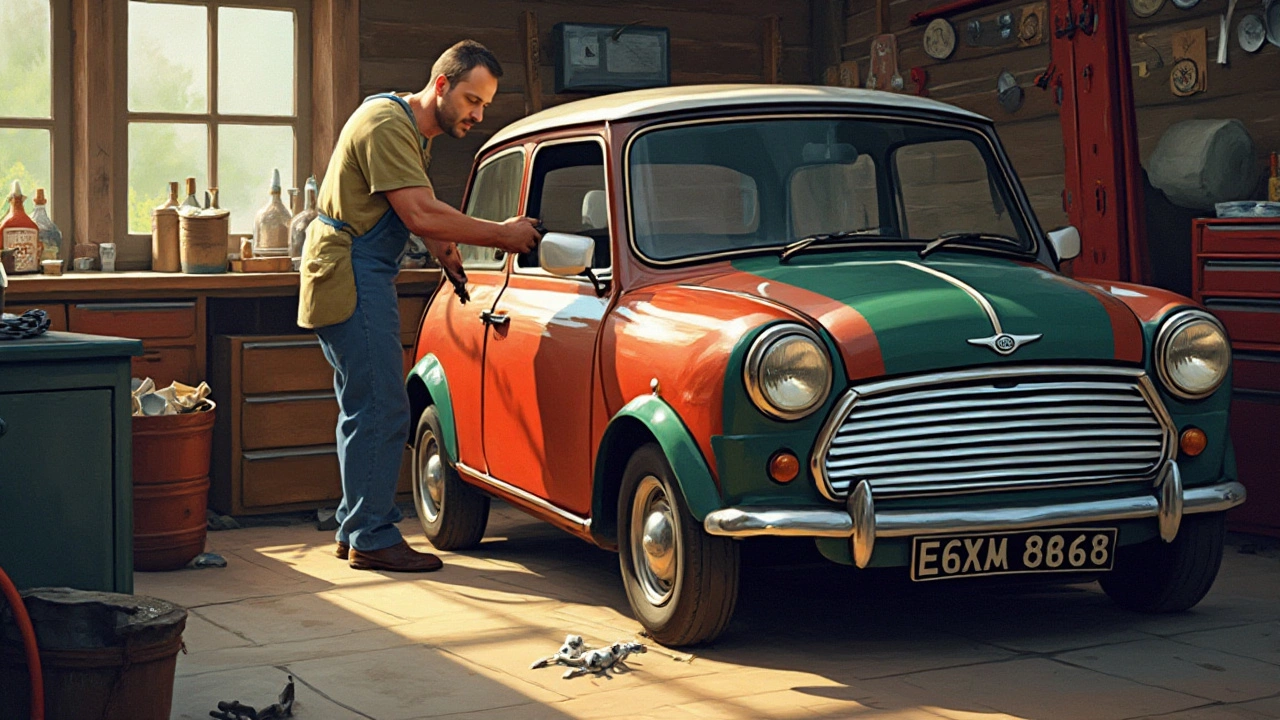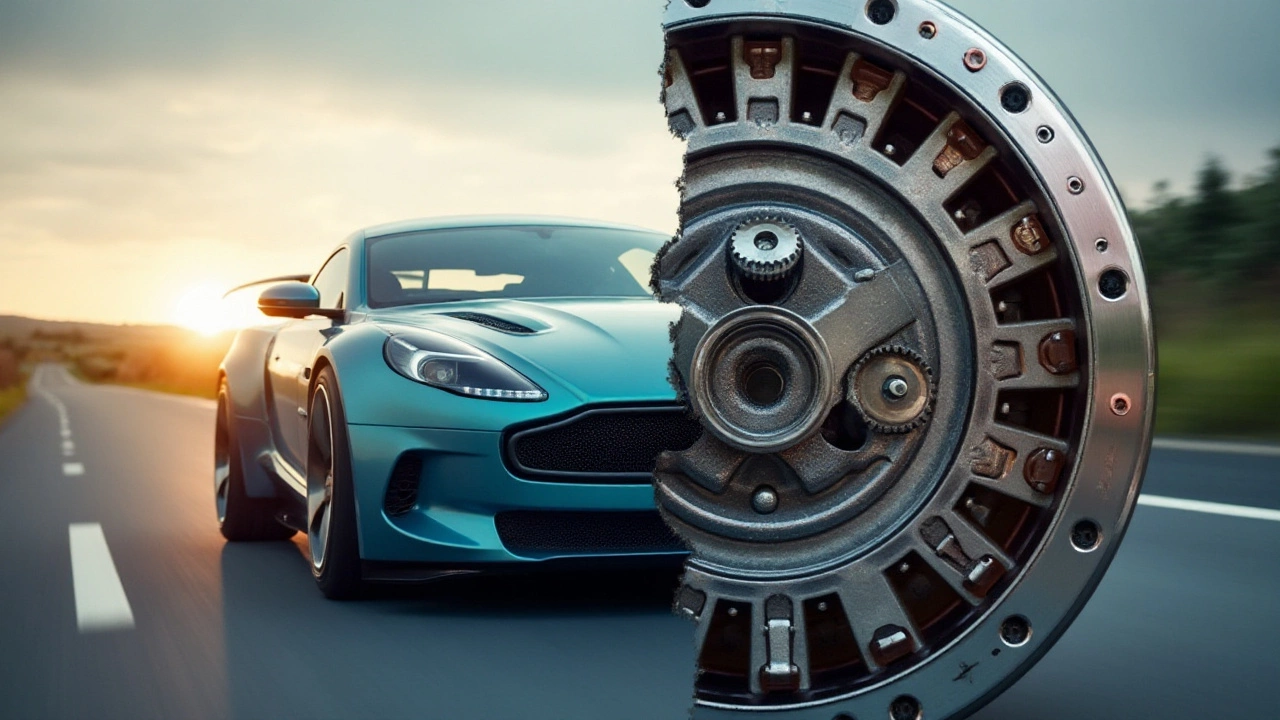When it comes to upgrading your vehicle, wheel spacers often find their way into the conversation. These small but impactful additions can transform not just the look of your vehicle but also its performance on the road. But with any modification, there are factors one must weigh before diving in.
For the uninitiated, wheel spacers are components that fit between the wheel hub assembly and the wheel itself, effectively pushing the wheel outward from its original position. This adjustment can result in a wider stance and improved handling, but it's important to understand the full scope of this modification.
This article sheds light on both the advantages and pitfalls of wheel spacers. We'll walk through tips on safely incorporating them into your vehicle's setup and take a closer look at what seasoned drivers have to say about their real-world experiences. Whether you're looking for enhanced aesthetics or seeking a more stable ride, understanding wheel spacers can be instrumental in making an informed decision.
- Purpose of Wheel Spacers
- Advantages of Using Wheel Spacers
- Potential Downsides to Consider
- Safety Tips for Installation
- Expert Opinions and Real-world Experiences
Purpose of Wheel Spacers
At first glance, wheel spacers might seem like a niche addition, mostly used by car enthusiasts looking to give their vehicles a more aggressive stance. However, the purpose goes far beyond mere aesthetics. Wheel spacers are designed to create additional space between the wheel hub and the wheel itself, which often results in a wider track. This adjustment can provide several benefits in terms of both appearance and performance. The physical gap introduced by spacers allows for fitting larger brake calipers without interference, a feature particularly beneficial for performance cars and tuned vehicles. In some cases, drivers turn to spacers to correct an offset disparity caused by aftermarket wheels or non-standard suspension setups. Whether it's uniformity in wheel offset or accommodating larger rims, spacers offer a practical solution.
While the cosmetic transformation is evident with a wheel's more prominent position flush with the fender, what often goes unnoticed is how vehicle modification impacts driving dynamics. By increasing the track width, spacers can enhance stability and reduce body roll, particularly during high-speed maneuvers or aggressive cornering. This stability enhancement translates into a more predictable driving experience, especially for those who regularly drive on winding roads or participate in track events. The potential benefits extend to off-road adventures as well, where a wider stance means improved traction and balance on rugged terrain. It's worth noting that these enhancements are contingent on precise installation, highlighting the importance of ensuring proper fitment and alignment.
Traditionally, the world of automotive adjustments can be riddled with trial and error, but there's undeniable value in reliable insights. According to a respected tuner from MotorTrend, "Spacers have long been a staple in the modification arsenal, offering flexibility and function. They bridge the gap between stock limitations and customized freedom, facilitating a level of personalization previously unattainable."
"Spacers are not just about looks. It's a blend of safety and style—a balancing act that, when done right, can elevate the entire driving experience," says John Trane, an automotive engineer from AutoWeek.For those considering wheel spacers, understanding their multi-faceted role can assist in making a well-informed decision that balances the aesthetic appeal with functional advantages.
Advantages of Using Wheel Spacers
There's something undeniably alluring about the idea of adding wheel spacers to your ride. One of the most often praised benefits is their ability to improve a vehicle's stance, giving it a more aggressive appearance that can turn heads on the street or at car meets. By pushing the wheels out, wheel spacers can create a wider track, which not only enhances aesthetics but may also contribute to better handling and stability on the road. This is particularly appealing to enthusiasts looking to make a statement without committing to a full suspension overhaul or new set of wheels.
In terms of performance, one of the compelling aspects of wheel spacers is their potential impact on cornering stability. By broadening the stance, they can lower the car’s center of gravity ever so slightly, making it more stable during turns. This improved stability can lead to a more confident driving experience, reducing the understeer or oversteer some drivers experience. This advantage is especially pronounced in vehicles with a rear-wheel or all-wheel drive, where balance is crucial for optimal performance. Many drivers have reported that spacers can deliver a noticeable improvement in handling dynamics, especially when matched with performance tires.
Moreover, wheel spacers provide a practical solution for those looking to upgrade their vehicles with larger brake kits. These kits may require additional room between the hub and the wheel, which spacers aptly supply. Therefore, wheel spacers not only benefit the appearance and preliminary handling but also accommodate functional upgrades to enhance stopping power. Many racers and performance enthusiasts consider it a cost-effective method to enjoy better performance without the financial burden of entirely new aftermarket rims.
It's also worth noting that for some, the convenience of wheel spacers lies in compatibility. They allow owners to fit wheels from different bolt patterns, offering the freedom to choose designs that may not otherwise have been originally compatible with their vehicle. This enables car owners to select wheels based on style preference, rather than being constrained by the factory specifications. It broadens the horizon for customizing one’s vehicle to personal tastes without resorting to costly replacements or more extensive modifications.
"Wheel spacers can be an invaluable tool for enhancing your car's functionality and aesthetics, often endorsed by car enthusiasts worldwide," says automotive expert James O'Malley. "When correctly installed, they can offer both practical improvements in performance and the visual impact every car lover dreams of."
The undeniable versatility and affordable nature of wheel spacers position them as a popular choice among car enthusiasts. They offer a multitude of benefits that cater to both the aesthetic sensibilities and performance needs of drivers, making them worthy of consideration for anyone looking to enhance the driving experience.

Potential Downsides to Consider
While the allure of wheel spacers is tempting, it's crucial to acknowledge and weigh their potential drawbacks. One significant concern is the added stress on wheel bearings. Spacers inevitably change the geometry of your vehicle's wheel hub assembly, which can lead to premature wear of the bearings. The increased distance between the wheel and the suspension component results in more leverage being applied, potentially causing damage over time. This modification may also introduce vibrations at specific speeds, which could distract or discomfort drivers on long journeys.
Another factor to consider is the impact on tire wear and handling. By altering the track width, car safety can be inadvertently compromised if not handled correctly. Spacers can affect the suspension dynamics, potentially leading to increased pressure on tires, especially in tight corners. This could result in uneven tire wear patterns, which in turn, decreases the lifespan of your tires and adds an unexpected expense to your maintenance routine. A misjudged enhancement might affect the vehicle's alignment, hence affecting its roadworthiness.
Legal and Warranty Considerations
It's worth mentioning the legal aspect of installing wheel spacers. Regulatory statutes vary widely from one region to another, and in some cases, spacers may render your vehicle unroadworthy or void your insurance policy. The modification might even void manufacturer warranties, leaving you with potential financial burdens in case of a malfunction. It's recommended to research local laws and consult with your insurance provider before making any adjustments to the vehicle's structure.
"While they can enhance your vehicle's stance and performance, it's important to ensure that any modifications, such as wheel spacers, comply with safety laws and standards." - John Smith, Automotive Safety Advisor
Another potential downside is related to installation complexity. While some seasoned enthusiasts prefer a DIY approach, improper installation can lead to catastrophic failure while driving at high speeds. A wrong fit or poor fastening may cause wheels to loosen, creating a dangerous situation for both the driver and others on the road. Therefore, it is frequently advisable to rely on professionals who specialize in vehicle modifications to ensure that installation is executed properly and safely, securing the best results from your investment.
Safety Tips for Installation
When diving into the world of vehicle modifications, it's crucial to have a keen eye for safety, especially with additions like wheel spacers. These modifications, while offering enhanced aesthetics and improved handling, require meticulous attention during installation. The process should always start with selecting the right spacers for your specific make and model, as mismatched components can lead to disasters on the road. There are generally two primary types of spacers: slip-on and bolt-on, each serving different needs and requiring unique handling. Slip-on spacers are usually easier to install but often need longer studs for proper engagement. In contrast, bolt-on spacers attach directly to the hub, securing the wheel in place. Matching the ideal type to your vehicle setup is the first line of defense against potential mishaps.
Ensuring proper torque is another critical factor in the installation process. Incorrect torque can result in the spacers becoming loose, causing wobbling and instability. It's recommended to use a torque wrench to ensure each nut or bolt is tightened to the manufacturer's specifications. This step cannot be overstated, as a deviation, even by a small margin, could spell trouble. Proudly remember that regular checks over time are indispensable — just because it's snug today doesn't mean it'll stay that way. Regular maintenance routines should include re-checking the torque after driving a few hundred miles.
Another key aspect is cleanliness; some overlook its importance, but clean surfaces ensure a more secure fit. Dirt or debris can create gaps or even lead to uneven surfaces, which over time may cause the spacer to fail. A simple habit of cleaning all relevant components before installation with a non-abrasive cleaner can make a significant difference. Additionally, lubrication of bolts, nuts, and studs can aid in achieving the correct torque and prevent rust. As the wise mechanic often says, "A clean car is a happy car," although no statistics seem to quantify it, the peace of mind that everything is fastened securely is invaluable.
Proper thread engagement should also be on your checklist. When installing wheel spacers, ensure three to five full turns on the wheel studs for secure attachment. Improper thread engagement increases the risk of the wheel becoming detached. Checking the spacer thickness in relation to the length of the studs can prevent this lapse. This step involves both an understanding of your vehicle's setup and an eye for detail.
Lastly, professional guidance can never be underestimated. If you're new to modifying vehicles, consider enlisting the help of a professional mechanic. A skilled pair of hands can set up the spacers correctly, offer valuable tips, and spot potential issues that may go unnoticed. As automotive expert Alex Thompson once noted,
"Taking the time to seek professional advice not only ensures safety but enhances your knowledge for future projects."Such insights are worth their weight in gold for anyone looking to keep their car both stylish and safely grounded.

Expert Opinions and Real-world Experiences
From avid car enthusiasts to professional mechanics, opinions on wheel spacers often vary, influenced by personal experiences and application context. A trip to the local auto shop or a scroll through car enthusiast forums reveals a range of insights into these popular modifications. Many vehicle owners who appreciate a more aggressive stance are adamant about the aesthetics that wheel spacers provide. The visual enhancement is often a driving factor for those seeking the distinct, custom look. But for every tale of improved appearances, there's a cautionary story about the need for meticulous precision during installation.
Several experts in the field emphasize the role of vehicle modification in altering your car's dynamics. While wheel spacers can aid in filling the gap between the tire and fender, offering that wide-stance allure, they may also alter the load on your vehicle's bearings and affect steering geometry. Thus, professional mechanics like Mike Johnson from renowned auto service chains often advocate for regular checks on wheel alignment and tightness of the lug nuts once spacers are installed. This proactive attention helps in mitigating unexpected challenges that might arise from this modification.
Let's not ignore the collective wisdom from car owners who've clocked significant miles with their wheel spacers. Many report better stability during cornering, attributing this to the enhanced track width, which aids in reducing body roll. A widely appreciated aspect of wheel spacers, particularly in off-roading communities, is the increased stability when navigating uneven terrains. However, it's not always sunshine and smooth rides. Adjustments are necessary frequently, and trip durations or specific driving conditions might require additional vigilance, as noted by Sarah Thompson, an auto enthusiast who contributes to a popular auto blog.
"With wheel spacers, it's like you find a new balance point," she mentions, "but you have to be willing to keep that balance in check."
Finally, no discussion is complete without addressing the debates on car safety. A large contingent within the automotive community warns against improper or low-quality installations. In some cases, poorly machined spacers have been known to cause vibration issues or even compromise the safety of your wheels. Quality and correct sizing are non-negotiable — it's crucial to rely on reputable brands that offer precise manufacturing. These drawbacks highlight the importance of doing one's homework — gather data, read reviews, and actively engage with those who've tread the same path.






